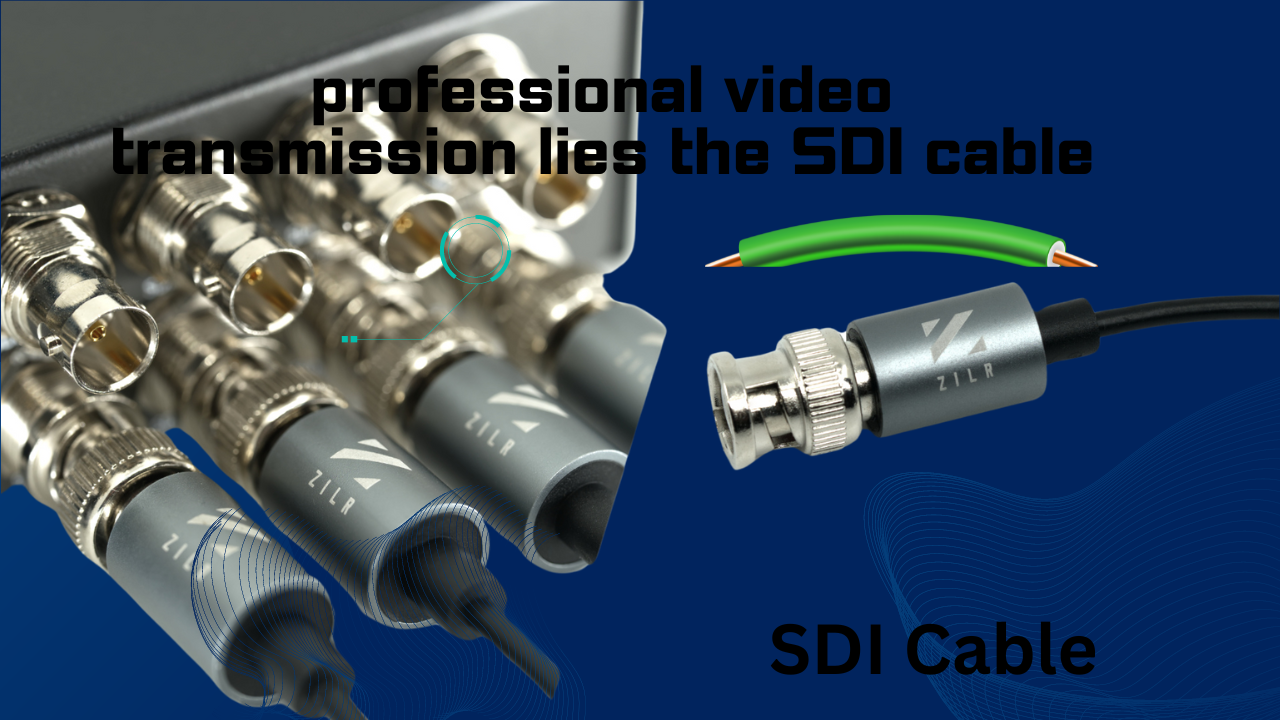
Introduction:
In the vast landscape of technology professional video production, where every pixel and frame matters, the significance of high-quality video transmission cannot be overstated. Amidst the array of cables and connectors, one often overlooked yet indispensable component stands out: the Serial Digital Interface (SDI) cable. Let’s embark on a journey into the realm of SDI cables, exploring their evolution, technical intricacies, and unparalleled role in professional video workflows.
Table of Contents
Demystifying SDI Cable:
At the core of professional video transmission lies the SDI cable, a stalwart companion in the pursuit of uncompromised video quality. Dating back to its standardization in 1989 by the Society of Motion Picture and Television Engineers (SMPTE), this cables have served as the backbone of broadcast studios, live event productions, and video editing setups worldwide. Unlike their consumer-grade counterparts, SDI cables boast reliability, robustness, and a legacy of delivering pristine digital video signals over extended distances.
The Evolution of SDI Standards:
Over the decades, SDI cables have undergone a remarkable evolution, propelled by advancements in technology and the ever-growing demands of the industry. From the inception of SD-SDI in 1989, capable of transmitting standard-definition video formats, to the groundbreaking introduction of standards like 12G-SDI in 2015, each iteration has pushed the boundaries of video transmission capabilities. With increased data rates, resolutions, and bandwidth, SDI cables continue to pave the way for uncompromised video quality in professional settings.
Unlocking the Technical Realm of SDI:
Beyond their physical attributes, SDI cables harbor a realm of technical intricacies essential for optimal performance. From payload transmission to blanking intervals, the cables operate with precision to ensure the seamless delivery of video signals. Real-time transport protocols (RTP) further enhance data transmission, resulting in superior video quality, audio-video synchronization, and minimal latency. Understanding these technical nuances is paramount for professionals seeking to harness the full potential of these cables in their workflows.
Ensuring Performance with SDI Checks:
In the pursuit of flawless video transmission, thorough SDI checks are imperative. In-service testing, eye pattern testing, and jitter testing serve as gatekeepers, ensuring the integrity and reliability of these cables. Additionally, SDI status displays provide invaluable insights into physical layer measurements, facilitating swift diagnostics, and configuration adjustments for optimal performance. By conducting comprehensive SDI checks, professionals can mitigate potential issues and ensure uninterrupted video transmission in their productions.
Decoding the SDI Interface:
Transitioning from analog to digital signals has revolutionized video transmission, with SDI cables emerging as the preferred choice for professionals. Unlike their analog counterparts, digital signals offer unparalleled reliability, fidelity, and resistance to signal degradation over extended distances. The cable embody this digital revolution, offering a reliable solution for high-quality video transmission in professional settings. Whether in broadcast studios, live event productions, or post-production facilities, these cables serve as the cornerstone of modern video workflows, ensuring the seamless delivery of content to audiences worldwide.
Choosing the Right SDI Cable Manufacturer:
Selecting a reputable manufacturer is paramount in ensuring the quality and reliability of SDI cables. With a plethora of options available, choosing a trusted partner like CLOOM Tech ensures tailored solutions tailored to the specific needs of professionals. From custom SDI cable assemblies to high-bandwidth transmission solutions, CLOOM Tech offers a diverse range of options to meet the demands of professional video production. By partnering with a reputable manufacturer, professionals can rest assured that their SDI cables meet the highest standards of quality, performance, and reliability.
SDI Cable: The Professional’s Choice:
In the ongoing debate between HDMI and SDI, professionals resoundingly choose the latter for its reliability, durability, and cost-effectiveness. While HDMI may cater to consumer-oriented applications, SDI cables remain the gold standard for professional video production. With their robust construction, secure connectors, and unparalleled performance, this cables continue to elevate the standards of professional video transmission. Whether capturing live events, producing broadcast-quality content, or editing high-resolution footage, professionals rely on these cables to deliver uncompromised video quality and reliability in their productions.
HDMI vs SDI Cables: A Brief Comparison
HDMI (High-Definition Multimedia Interface) and SDI (Serial Digital Interface) cables are two commonly used cables for video transmission, each with its own advantages and applications.
- Signal Integrity: SDI cables offer superior signal integrity over longer distances, making them ideal for professional video production. HDMI cables, while suitable for consumer electronics, may experience signal degradation over extended cable runs.
- Connector Durability: SDI-cables utilize robust BNC connectors with a secure locking mechanism, ensuring reliable connections in professional settings. HDMI connectors, though convenient, may be more prone to damage or disconnection.
- Bandwidth and Data Rate: SDI cables support higher bandwidths and data rates, making them suitable for transmitting high-definition and ultra-high-definition video formats. HDMI cables have limitations in handling higher resolutions and frame rates.
- Cost and Accessibility: HDMI cables are widely available and relatively inexpensive, catering to consumer needs. SDI cables, designed for professional use, may be more expensive and require compatible equipment.
- Application Specificity: HDMI cables are commonly used in home theaters, gaming setups, and personal computers. SDI cables excel in professional environments such as broadcast studios, live events, and post-production facilities where reliability and performance are critical.
Conclusion:
In conclusion, SDI cables stand as a testament to the relentless pursuit of excellence in professional video production. From their humble beginnings to their widespread adoption in broadcast studios and live event productions, these cables have proven indispensable in delivering uncompromised video quality. As the industry continues to evolve, these cables remain at the forefront, driving innovation and ensuring seamless video transmission for generations to come. By understanding the evolution, technical intricacies, and unparalleled benefits of this cable, professionals can harness their full potential and elevate their video productions to new heights.


